JiVS IMP
the platform for digital transformation
From digitalization to agility and multi-cloud – boards and executive teams are being driven to action by today’s technology trends that can potentially make a decisive contribution to the future performance of their companies and business models.
This has led to a correspondingly major effort in these companies to modernize their IT environments. Another factor is pressure from the providers of leading business applications, such as SAP. These firms want to establish their new software generations as the market standards earlier rather than later and use them to replace the earlier versions. Against this backdrop, around 50,000 SAP customers must migrate to the new software generation SAP S/4HANA by 2025, when support for SAP ECC 6.0 is due to expire.
Despite this pressure, many customers are hesitating to implement the new software generations because the issue is not only technical. On the contrary: companies are also faced with multiple strategic questions. One of the major challenges here is defining how the application and system environment should look going forward. After all, it will need to support agile and big data projects as efficiently and cost-effectively as possible. This is what boards and management want and expect – to say nothing of users, customers, and suppliers.
A key answer to this question is the separation of information that is no longer required in everyday operations – and can be managed in its own environment – from operational information in the application environment. In a sense, the two areas of information and applications have different objectives. While the application level requires agility, information needs stability and the legally-compliant management of its lifecycle before it is definitively deleted.
The need for an independent, multi-cloud platform can arise from multiple factors, such as company acquisitions and divestments; datacenter and office consolidations; process harmonization; migration to new software generations; and the continual rightsizing of the system environment.
JiVS IMP is exactly this type of information management platform (IMP). As it is Java-based, it supports all common public cloud offerings and database management systems. Certified by auditors, it forms the foundation for 100% legal compliance while providing 100% access to information for which there is no immediate operational need.
JiVS IMP enables companies to completely retire their legacy systems. This usually cuts operating costs by 80 percent or more compared with keeping the legacy systems running. As a centralized information hub, JiVS IMP prepares a company’s information assets for migration to a new software generation. In this way, the information volume is reduced by 90 percent or more, while optimizing its quality via harmonization and enrichment. That normally helps reduce the migration effort by half. As it is an integral part of the target architecture and environment, JiVS IMP keeps the new systems permanently lean and this alone can reduce the TCO of the new environment by 25 percent.
Data that is no longer required, along with content from operational applications, can be continually transferred to this legally-watertight, system-independent platform. Doing this makes the company’s IT much more agile and ensures it can support a wide range of business requirements with a minimum of effort. These scenarios include:
- Migration to SAP S/4HANA and SAP C/4HANA in five steps
- Acquisition and divestment of company divisions or business units
- Consolidation of heterogeneous application environments
- Consolidation of globally-distributed datacenters
- Data quality optimization
- Support for big data scenarios and data-driven business models
JiVS IMP is the third generation of software from the company Data Migration Services. The platform is the successor to the component-based prior version JiVS and especially to JiVS History, the most widely-used component on the market.
